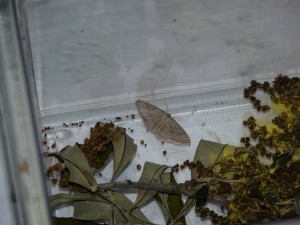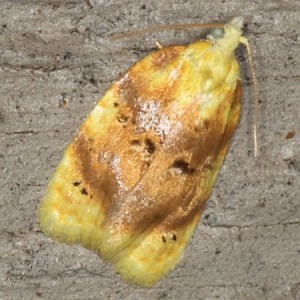By Extension Specialist, Cindy Peacock
Every spring we experience that little green caterpillar hanging from our oak trees. They fall in our hair and clothing and if you’re eating lunch outside underneath an oak tree, they may even fall on your sandwich.
These small green and yellow caterpillars are called oak leafrollers or inchworms, (Archips semiferanus) and oak leaftiers (Croesia semipurpurana). They range in size from ¼ “to 1 “. They feed on the tender new growth of the leaves and flowers of our oak trees. The Oak leafroller will also feed on hackberry, pecan and walnut trees.
The Oak leaftier will feed on several species of oak trees. The life cycle of the caterpillars is very similar. The adult stage is a moth. The oak leafroller moth is small- about ½”, mottled tan and brown. The oak leaftier moth is small- about ½”, yellow with brown markings on the wings. They both mate and lay their eggs in the twig tips and leaf buds of several types of trees in the month of May. The eggs remain there for 10 months, then hatch out in March and begin to feed on the tender new leaves.
When disturbed by wind, weather or predators they will hang from their web. When they finish feeding, the oak leafroller hides in the cracks and crevices on branches then, begin to pupate. The oak leaftier will drop to the ground and pupate in the leaf litter. Within a week or two they turn into the adult moth in May when the process starts over.
These caterpillars are more of a nuisance than a destroyer. There is no need to get out the pesticides because they have a few predators that will take care of them naturally. The parasitic wasps and birds will feed on them. Just let nature take its course and dodge a few.
Oak leafroller
Oak leafroller moth
Oak leaftier moth
 1
1



